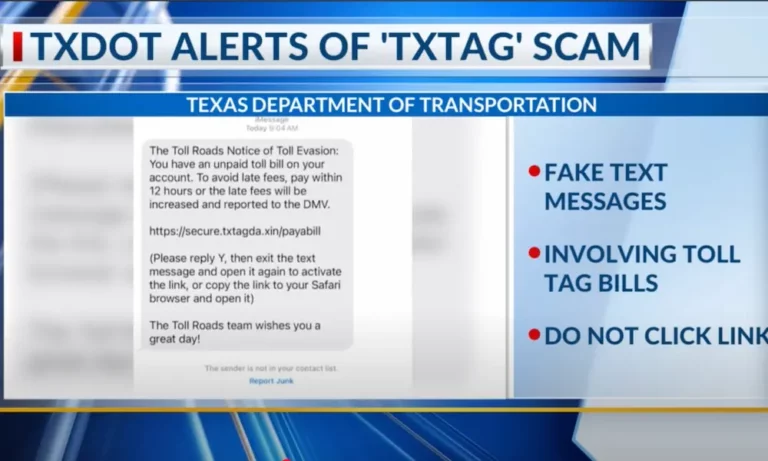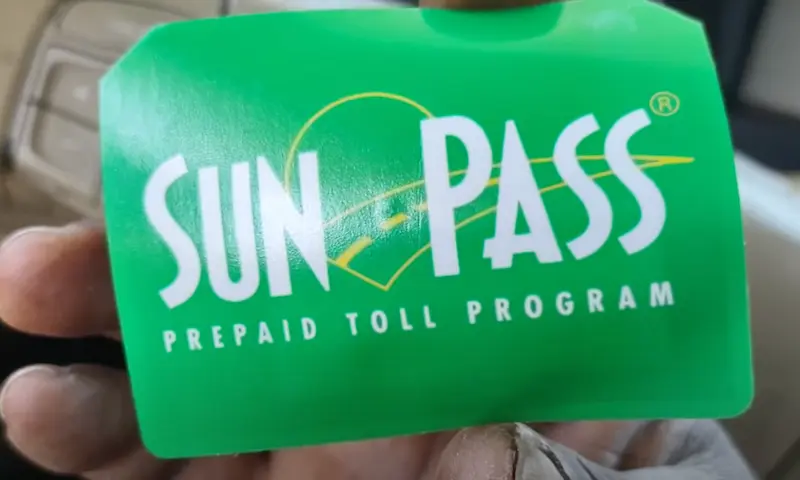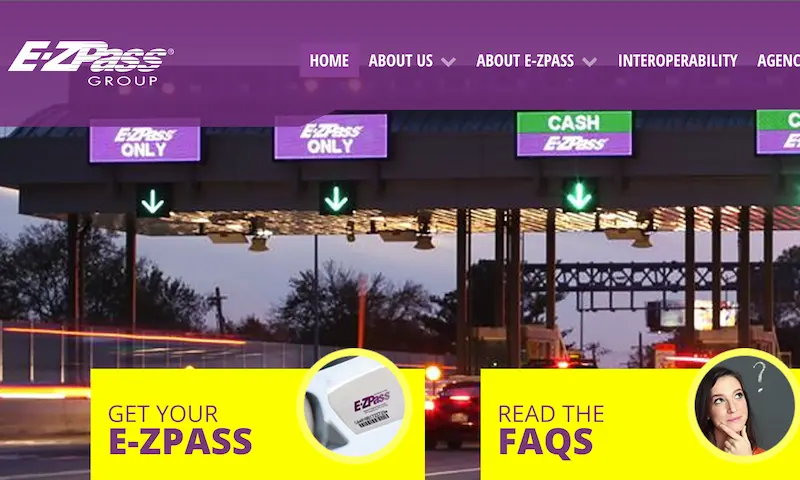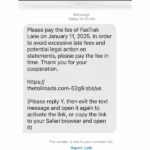You just got a text about an unpaid TxTag toll bill that needs immediate payment. Before you panic and click that link, stop. Chances are it’s a scam designed to steal your personal information. These fraudulent texts have been surging since early 2024, becoming increasingly sophisticated and widespread. Here’s what you need to know to protect yourself and your information.
How the TxTag Text Scam Works
The scammers have created a pretty convincing routine. You receive a text message claiming to be from TxTag informing you of an “unpaid toll bill” that requires your immediate attention.
These messages typically follow a predictable pattern:
- They create urgency by demanding payment within a short timeframe (usually just 12 hours)
- They threaten consequences like late fees, increased penalties, and DMV reporting
- They include a suspicious link that leads to a fake payment website
- Some even ask you to reply “Y” to “activate” the link
A typical message might look like this: “The Toll Roads Notice of Toll Evasion: You have an unpaid toll bill on your account. To avoid late fees, pay within 12 hours or the late fees will be increased and reported to the DMV.”
The goal is simple: get you to panic and click without thinking.
Why These Scams Are So Effective
These scams work because they tap into several psychological triggers that override our usual caution:
- Urgency – The 12-hour deadline creates immediate pressure
- Fear of consequences – Nobody wants unpaid bills reported to the DMV
- Familiarity – Many Texans do use toll roads and expect communications
- Timing – Administrative changes to TxTag (now managed by Harris County Toll Road Authority as of December 2024) create confusion scammers exploit
- Widespread targeting – They cast a wide net, affecting drivers in Texas and beyond
The scammers don’t need everyone to fall for it – just enough people to make their efforts worthwhile.
Red Flags to Watch For
Knowing the warning signs can save you from becoming a victim. Here are the key indicators of a fraudulent TxTag message:
- Urgency with short deadlines – Legitimate organizations rarely demand payment within hours
- Threats of severe penalties or DMV reporting – Real notices follow legal processes with reasonable timeframes
- Instructions to reply to the message – Legitimate services rarely ask for text responses
- Unknown or suspicious phone numbers – Especially those with out-of-country area codes
- Poor grammar or spelling errors – Though scammers are getting better at this
- Requests for unusual payment methods – Like gift cards or wire transfers
How Official TxTag Communications Actually Work
Understanding how legitimate TxTag communications function is key to spotting fakes:
- TxTag does not send texts or emails about unpaid balances or final payment reminders
- Any legitimate TxTag text messages will only come from the number “22498”
- You must explicitly opt into email and text notifications to receive any communications
- Official communications direct you to the legitimate TxTag website (TxTag.org)
- Since December 2, 2024, TxTag accounts are managed by Harris County Toll Road Authority (HCTRA)
When in doubt, the safest approach is to ignore the message and check your account status directly.
The Scale of the Problem
This isn’t just affecting a few unlucky drivers. The scam has reached alarming proportions:
- Active since April 2024, with a significant increase since September 2024
- Targeting drivers across multiple states including Texas, Massachusetts, Indiana, and California
- TxDOT actively working to shut down fraudulent websites associated with these scams
- FBI and other agencies monitoring and investigating the surge in complaints
The widespread nature of these scams puts millions of drivers at risk of potential identity theft and financial fraud.
Real-World Impact: What Scammers Are After
When you click those links, you’re not just risking a few dollars. As FBI Special Agent Keith Custer explains: “They’re trying to collect these usernames and passwords and then use them at Bank of America or Wells Fargo or Charles Schwab, anywhere where someone might have a financial account. Once they access those accounts, they can do some damage.”
The potential outcomes include:
- Identity theft – Using your information to open new accounts
- Financial theft – Directly accessing your existing accounts
- Data harvesting – Building profiles to use in more targeted future scams
- Malware installation – Compromising your device for ongoing access
Step-by-Step Protection Plan
If you receive a suspicious TxTag message, follow these steps to protect yourself:
If You Haven’t Clicked Yet:
- Don’t click any links in the message
- Don’t respond to the message in any way
- Verify your account status through official channels:
- Visit the legitimate TxTag website directly (type TxTag.org in your browser)
- Log into your account to check your balance
- Call official TxTag customer service: 1-888-468-9824
If You’ve Already Clicked or Responded:
- Change passwords for any potentially compromised accounts
- Enable two-factor authentication wherever possible
- Monitor your financial accounts for suspicious activity
- Consider placing a fraud alert on your credit reports
- Report the incident to authorities (see next section)
Reporting the Scam: Why It Matters
Reporting these scams isn’t just about your individual case – it helps authorities track patterns, identify scammers, and prevent others from becoming victims.
Where to Report:
- FBI’s Internet Crime Complaint Center: www.ic3.gov
- Federal Trade Commission: ReportFraud.ftc.gov
- Your wireless provider: Forward the suspicious message to 7726 (SPAM)
- TxTag Customer Service: TxTag.org or call 1-888-468-9824
What to Include in Your Report:
- The phone number the message came from
- The exact content of the message
- Date and time received
- Any links or websites mentioned
- Whether you responded or clicked any links
Even if you didn’t fall for the scam, reporting helps authorities build a comprehensive picture of these operations and potentially leads to identifying and prosecuting those responsible.
The Technical Side: How These Scams Evolve
Like any criminal enterprise, TxTag scammers continuously adapt their tactics to evade detection and improve success rates:
| Evolution Factor | Old Approach | New Approach |
|---|---|---|
| Message Origin | Random numbers | Spoofed numbers resembling official sources |
| Language Quality | Poor grammar and spelling | Professional-looking messages with fewer errors |
| Website Design | Obviously fake | Sophisticated clones of legitimate sites |
| Targeting | Mass texting | More targeted based on regional data |
| Pressure Tactics | Generic threats | Specific references to local toll roads and regulations |
This evolution makes the scams increasingly difficult to identify at a glance, requiring greater vigilance from potential victims.
The Bigger Picture: Digital Safety Habits
The TxTag scam is just one example of the broader threat landscape. Developing these digital safety habits will help protect you from a wide range of scams:
- Verify independently – Always check directly with organizations through official channels
- Be skeptical of urgency – Legitimate organizations rarely demand immediate action
- Guard personal information – Think twice before entering sensitive data online
- Use unique passwords – Don’t reuse passwords across different accounts
- Enable two-factor authentication – Add an extra layer of security to important accounts
- Keep software updated – Ensure your devices have the latest security patches
- Check URLs carefully – Verify website addresses before entering information
What Makes You Vulnerable to Scams
Understanding the psychological factors that make us susceptible to scams can help strengthen your defenses:
- Authority bias – We tend to comply with requests from perceived authorities
- Scarcity mindset – Time-limited threats trigger impulsive reactions
- Social proof – If scams appear common, we may assume they’re legitimate
- Consistency principle – Once we start interacting with scammers, we tend to continue
- Reciprocity – Offers of help or solutions create a sense of obligation
By recognizing these triggers, you can pause and evaluate situations more critically when they arise.
Staying One Step Ahead
The fight against scammers requires staying informed about emerging threats and tactics:
- Follow updates from TxDOT and other official transportation authorities
- Watch for news reports about new scam variations
- Discuss suspicious messages with friends and family
- Consider using scam-detection apps or services
- Remember that legitimate organizations understand security concerns and expect verification
While the TxTag text scam continues to evolve, your best defense remains a combination of awareness, skepticism, and verification through official channels. When in doubt, ignore the text and check your account directly – a few extra minutes could save you from significant financial and personal headaches.
















